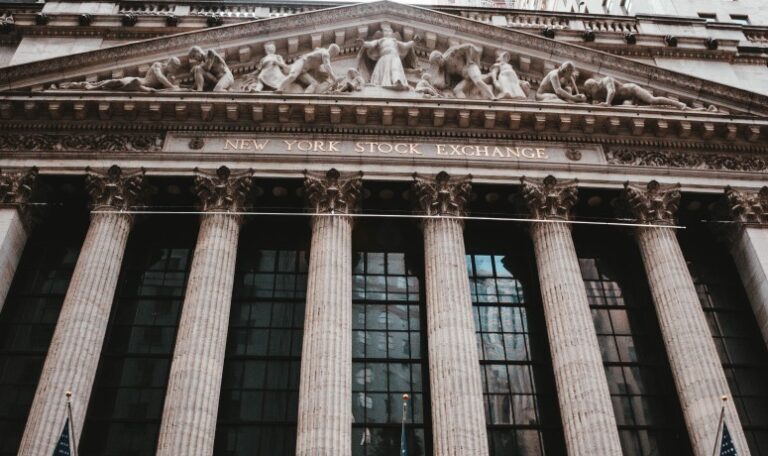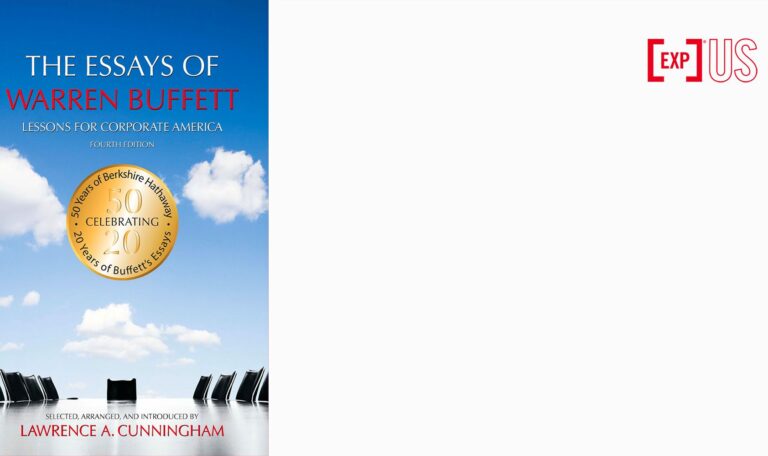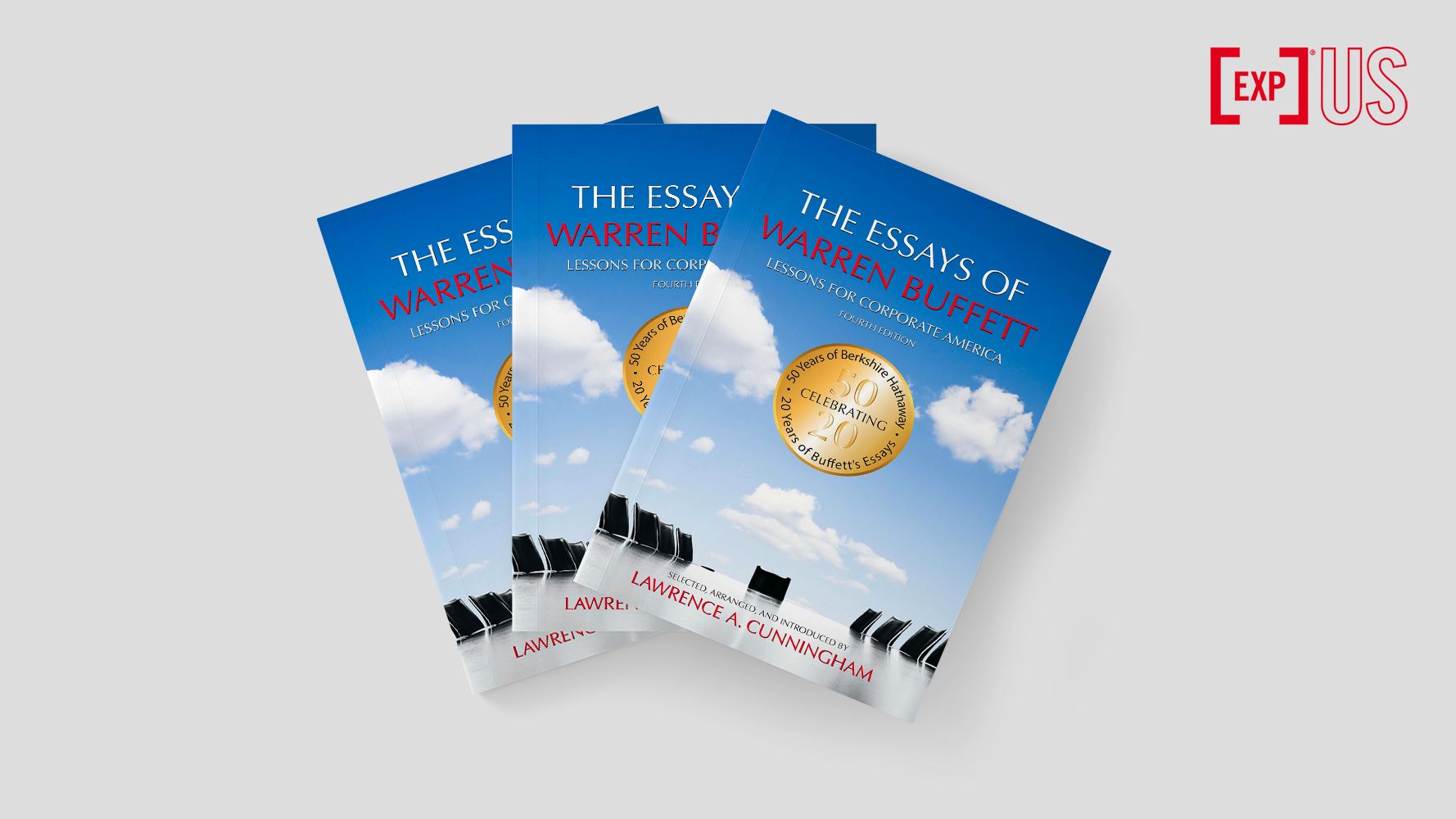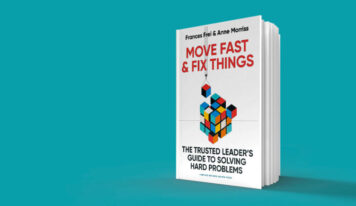A selection of the best insights on corporate management from the letters to shareholders of Berkshire Hathaway, headed by American mega investor Warren Buffett
Central ideas:
1 – At Berkshire, says Buffett, we apply a compensation system that rewards top managers for meeting goals in their businesses. We believe that good performance of a subsidiary should be rewarded regardless of whether the holding company’s stock is up, down, or stable.
2 – Our goal is to attract long-term stock owners who, at the time of purchase, do not have a timeline or target sale price, but plan to stay with us indefinitely.
3 – We find it meaningful when an owner cares about the person to whom they will sell their company. We like to do business with someone who loves their company. It is a sign that we will find important values in him: honest accounting, pride in the product, respect for customers, and employees.
4 – In addition to following general rules, a company’s accounting should answer three questions: 1) what is the approximate value of the company; 2) what is the probability of being able to meet future obligations, and 3) what is the quality of the managers’ work.
5 – A very typical Buffett recommendation: buy Berkshire stock only if you expect to hold it for at least five years. Those who are looking for short-term profit should look for another company.
About the authors:
Warren Buffett is an American investor and philanthropist. He is the principal shareholder, chairman, and chief executive officer of Berkshire Hathaway. Constantly cited on the Forbes list of the world’s most capital-rich people, he ranked number one in 2008.
Lawrence A. Cunningham is an American scholar, author of books on corporate governance and investments, and the Henry St. George Tucker III Professor of Law at George Washington University.
Introduction (Lawrence A. Cunningham)
A central theme connects Buffett’s lucid letters: the principles of fundamental business analysis, first elaborated by his professors Ben Graham and David Dodd, should guide investment practices. Linked to this are the principles of stewardship that define the role of managers (as responsible and diligent stewards of invested capital) and shareholders (providers and owners of capital). From these main points radiate pragmatic and sensible lessons regarding various relevant business issues, from acquisitions to governance and valuation.
Buffett applied these traditional principles as chief executive of Berkshire Hathaway, a company that originated as a textile company with operations dating back to the early 1900s. In 1965, when he took over Berkshire, the book value per share was $19.46. The intrinsic value per share was much lower. Today, the book value per share is over $200,000 and the intrinsic value is even higher. During this period, the growth rate of book value per share was about 19% per year.
Berkshire has become a holding company with operations in more than eighty lines of business. The main business front is insurance, which encompasses several companies, including one of the largest auto insurers in the United States, GEICO Corporation, a wholly-owned subsidiary, and one of the world’s largest reinsurers, General Re Corporation. A longtime owner and manager of large energy companies, Berkshire acquired 2010 the Burlington Northern Fe Railway Company, one of the largest railroads in North America.
In addition, the holding company has enormous subsidiaries: ten of them would be included in the Fortune 500 if they were independent companies. The spectrum of operations is so broad that, as Buffett wrote, “when you look at Berkshire, you catch a glimpse of the largest corporations in America.
This vast conglomerate was built by Buffett and Berkshire’s vice chairman, Charles Munger (Charlie), who invested in companies with excellent financial characteristics, run by prominent managers.

I – GOVERNANCE
When returns on capital are normal, the achievement of “earning more by investing more” is no great managerial achievement. You can achieve this result by yourself, working from home. Just quadruple the capital you put into a savings account and thus quadruple your earnings. You would hardly expect to be incensed by this particular achievement. Yet retirement ads often praise chief executives who, say, quadrupled the company’s profits while they were in charge – without anyone assessing whether this gain was due only to many years of accumulated profits and compound interest.
If that company systematically earned a higher return on capital over the period, or if the capital employed just doubled during the chief executive’s tenure, he might be deserving of the praise. But if the return on capital is paltry and the capital employed has increased at the same rate as profit, such praise should be suppressed. A savings account in which interest was reinvested would achieve the same increase in profit each year – and, with only 8% interest, would quadruple its annual profit in 18 years.
The power of this simple mathematics is often ignored by companies to the detriment of their shareholders. Many corporate compensation plans pay out generous sums to managers for earnings enhancements generated solely or largely by retained earnings – that is, earnings denied to owners. For example, ten-year, fixed-price stock options are routinely granted, often by companies whose dividends are only a small percentage of earnings.
At Berkshire, however, we apply an incentive compensation system that rewards top managers for meeting goals in their businesses. If See’s [a Berkshire-owned candy manufacturer and distributor] does well, that won’t generate a bonus in the newspaper business – and vice versa. We also don’t check Berkshire’s stock price when we sign bonus checks. We believe that good performance by a subsidiary should be rewarded regardless of whether the holding company’s stock is up, down, or stable.
II – INVESTMENTS
In mid-1973, when we bought [substantial Washington Post Company, WPC] holdings, the price was no more than a quarter of the business value per share of the company’s stock. Calculating the price/value quotient required no special knowledge. Most securities analysts, advertising brokers, and media executives would have estimated the intrinsic value of WPC’s business in the range of $400 million to $500 million, the same amount we calculated. And every day, the $100 million stock market price was published for anyone to see. We had the advantage of our positioning: we had learned from Ben Graham that the key to successful investing is to buy shares in good companies when the market price is far below the latent business value.
The previous discussion about arbitrage makes a brief discussion of the “efficient market hypothesis” (EMH) relevant. This doctrine was very fashionable – indeed, it became almost part of Holy Scripture – in academic circles throughout the 1970s. In essence, it said that it was useless to analyze stocks because all public information about them was already adequately reflected in the price. In other words, the market always knew everything. As a corollary, according to the professors who taught HME, anyone who threw darts toward the stock charts could assemble a portfolio with prospects as good as the one created by the smartest and most industrious securities analyst. Amazingly, HME has been adopted not only by academics but also by many investment professionals and company managers. By correctly observing that the market was often efficient, they incorrectly concluded that the market was always efficient. The difference between these propositions is like water to wine.
Our equity investment strategy remains little changed from what we said in the 1977 Annual Report: “We select our marketable common and preferred securities in much the same way we would evaluate a company for acquisition in its entirety. We want the company to (a) be understandable to us; (b) have favorable long-term prospects; (c) be operated by honest and competent people; and (d) be available at a very attractive price.” We only had reason to make a single change, we replaced “an attractive price” with “a very attractive price.”

III – ALTERNATIVES
Berkshire will only achieve satisfactory results from its four preferred issues through the good performance of the common stocks of the companies in which we invest.
For this to occur, good management and industry with at least tolerable conditions will be necessary. But we believe that Berkshire’s investment will also help, and the shareholders of all the investees will profit in the years to come from the preferred stock we buy. The help will come from the fact that these companies now have large, stable, and interested shareholders whose president and vice president have, through Berkshire’s investments, indirectly committed a very large amount of their own money to these ventures. In dealing with our investments, Charlie and I will support them and be analytical and objective. We recognize that we are working with experienced chief executives at the helm of their own companies who, nevertheless, at times value the opportunity to test ideas coming from someone with no ties to that sector or past decisions.
As a group, these convertible preferred stocks are not going to generate the returns that we can get when we find a company with wonderful economic prospects, that is not valued by the market. Nor will the returns be as attractive as those obtained when we invest capital in the way we prefer: acquiring at least 80% of a good company, with good management. But both these opportunities are rare, particularly with a size appropriate to our current and anticipated resources.
Derivatives are dangerous. They have dramatically increased the leverage and risks in the financial system. They have virtually made it impossible for investors to understand and analyze the major commercial investment banks. And they have allowed Fannie Mae and Freddie Mac to issue various false earnings statements for years. These institutions were so indecipherable that the federal regulator, OFHEO, could not identify the accounting misstatements of either, despite having a hundred employees who did nothing but oversee them. (Fannie Mae and Freddie Mac are the two leading mortgage companies in the US – see 2008 crisis).
IV – COMMON STOCK
Charlie and I are pleased with the prospect of listing on the stock exchange, as we believe that this change will benefit our stockholders. We have two criteria for assessing what the market is for Berkshire stock. First, we expect the stock to trade regularly at a price that is rational concerning the intrinsic value of the business. If this happens, each shareholder gets an investment result close to that of Berkshire’s business during the ownership period.
This outcome is far from automatic. Many stocks oscillate between extreme levels of under- and over-valuation. When this happens, owners are rewarded or penalized in a way that is entirely different from the performance of the company during that period of ownership. We want to avoid fickle results like these. Our goal is to have our shareholder partners profit from the company’s achievements, not thanks to the foolish behavior of the co-owners.
Consistent rational prices are the result of rational owners, both current and future. All our policies and communications are designed to attract the long-term, business-oriented owner and to filter out potential buyers whose focus is short-term and market-oriented. So far, we have been successful in this attempt. Berkshire’s shares have been sold, frequently and unusually, in a narrow range close to the intrinsic value of the business. We do not believe that listing on the NYSE will improve or diminish Berkshire’s prospects of selling systematically at an appropriate price: the quality of our shareholders will produce a good result in any market.
Our goal is to attract long-term owners who, at the time of purchase, do not have a timeline or a target sale price, but plan to stay with us indefinitely.
V – ACQUISITIONS
We find it meaningful when an owner cares about the person to whom they will sell. We like to do business with someone who loves their company, not just the money that the sale provides (although, no doubt, we understand the person who loves that too). The existence of this emotional attachment signals that we are likely to find important qualities in the company: honest accounting, pride in the product, respect for customers, and a loyal group of partners with a strong sense of direction. The reverse can also be true. When an owner auctions off his company and shows a total lack of interest as to what will happen from then on, we often find that it has been arranged for sale, especially when the seller is a “financial owner”. And if owners act with little regard for the company and its people, this conduct often contaminates attitudes and practices throughout the company.
When a business masterpiece has been created over a lifetime – or several lifetimes – of tireless care and exceptional talent, it must be important to the owner that the company be entrusted to someone who will continue that story. Charlie and I believe that Berkshire offers an almost unique home. We take our obligations to the people who create a business very seriously, and Berkshire’s ownership structure ensures that we can deliver on our promises. When we tell John Justin that his company’s headquarters (Justin Industries) will remain in Fort Worth or when we assure the Bridge family that their operation (Ben Bridge Jeweler) will not be merged with another jewelry store, those sellers can take those promises to the bank.

VI – BUSINESS VALUATION
Common parameters such as return in the form of dividends, the price/earnings or price/book value ratio, even growth rates, have nothing to do with valuation except insofar as they provide clues about the amount and timing of the company’s cash inflows and outflows. Growth can destroy value if, in the early years of a project or venture, it requires inflows that exceed the discounted value of the cash those assets will generate in later years. Market analysts and investment managers who lightly refer to “growth” and “value” styles as contrasting strategies are exhibiting their ignorance, not how sophisticated they are. Growth is just one component – usually to add; sometimes to diminish – in the value equation.
You can get some idea of the differences between book value and intrinsic value by looking at one category of investment: a college education. Consider that the cost of that education is its “book value. For this cost to be accurate, it must include the profits that the student gave up by choosing college over a job.
For this exercise, we will ignore the important non-economic benefits of a college education and focus strictly on its economic value. First, we need to estimate the lifetime earnings that the graduate will earn and subtract from this figure an estimate of how much he would have earned if he had not graduated. This gives us a figure for excess earnings, which must be discounted, at an appropriate interest rate, to the day of graduation. The result in dollars is equal to the intrinsic economic value of a college education.
Some graduates will find that the book value of their education exceeds the intrinsic value, meaning that those who paid for that education did not get a return equivalent to the value of their money. In other cases, the intrinsic value of the degree will far exceed its book value, and this result proves that the capital was wisely invested. One way or another, it is clear that book value is meaningless as an indicator of intrinsic value.
VII – ACCOUNTING
Despite the shortcomings of Generally Accepted Accounting Principles (GAAP), I would hate to have the task of devising a better set of rules. The limitations of existing standards need not be inhibiting, however; chief executives are free to treat GAAP statements as the beginning, not the end of their obligation to report to owners and creditors – which they should effectively do. After all, any subsidiary manager would find himself in trouble if he reported only basic GAAP numbers, omitting essential information needed by his boss, the chief executive of the parent company. So why should the CEO himself withhold vitally useful information from his bosses, the company’s owner-shareholders?
What needs to be reported is data-whether or not it conforms to GAAP standards, and may even be more detailed-to help readers who specialize in finance answer three main questions: (1) What is the approximate value of the company? (2) How likely is it that the company will be able to meet its future obligations? And (3) what is the quality of the managers’ work in the context in which they find themselves?
Every time investors – including supposedly sophisticated institutions – make exuberant assessments about reported “earnings” that are steadily rising, you can be sure that some managers and salespeople will exploit GAAP to generate those numbers, no matter what the truth is. Over the years, Charlie and I have observed many accounting-based frauds of staggering dimensions. Few fraudsters were punished; several were not even reprimanded.
It is far safer to steal large amounts with a pen in your hand than small amounts with a gun.

VIII – TAXATION
Berkshire and its shareholders together would pay far less tax if the company operated as a partnership or corporation that was taxed directly on the income of the shareholders – two structures often used for business activities, which for various reasons are not feasible for Berkshire. However, the penalty that our setup imposes is mitigated-although far from eliminated-by the long-term investment strategy. Charlie and I would follow the buy-and-hold policy, even if we ran a tax-exempt institution. We consider this the soundest way to invest, and that also says a lot about our profile. A third reason to favor this policy, however, is the fact that taxes are levied only when earnings are realized.
As a youngster, my favorite comic strip, Ferdinand, allowed me to learn about back taxes, although I skipped class at the time. With his cheerful but idiotic manner, Ferdinando Buscapé did everything wrong in the daily life of Brejo Seco, which left readers with a sense of superiority. At one point, he fell in love with a seductive New Yorker but gave up hope of marrying her because he had only a US$1 coin and the beauty only cared about millionaires. Discouraged, Ferdinando went to consult with Old Mose, the only source of wisdom in Brejo Seco. The wise man said: double your money twenty times and the girl will be yours (1,2,4,8… 1,048,576).
My last memory of the comic strip is the scene when Ferdinand enters an inn to use the coin in the slot machine. He hits a jackpot, and the money spills out on the floor. Ferdinand then follows Mose’s advice meticulously: he takes $2 and leaves in search of the next opportunity to double the money. After that, I dropped Ferdinand and started reading Ben Graham.
No doubt Mose was overrated as a guru: besides failing to foresee Ferdinand’s slavish obedience to instructions, he also forgot about taxes. If Ferdinand had been subject to, say, the 35 percent federal tax rate that Berkshire pays, and had managed an amount that doubled every year, he would have come to accumulate only $22,370 after twenty years. If he had continued to receive the annual doublings and pay 35% tax on each, he would have needed seven and a half years to reach the million dollars needed to win the girl.
IX – HISTORY
Today, the American per capita GDP is about US$ 56,000. In real terms, this is six times the amount in 1930, the year I was born, which is impressive – and a leap far beyond the wildest dreams of my parents or their contemporaries. Citizens are not intrinsically smarter now, nor do they work harder than those of 1930. They work much more efficiently and therefore produce much more. I am sure that this omnipotent trend will remain: the economic magic of the United States is still alive and well.
Some analysts complain about our real GDP growth of 2% a year. But let’s do some math. The US population grows by about 0.8% per year (0.5% relative to births minus deaths, and 0.3%, to net migration). Perhaps that is not impressive. But in a single generation of, say, 25 years, this range of growth leads to a 34.4% gain in real GDP per capita. (The capitalization effects generate a surplus over the percentage resulting from simply multiplying 25 x 1.2%.) In turn, this 34.4% gain will generate a staggering $19,000 increase in real GDP per capita for the next generation. If there were an equal distribution of this amount, the gain would be $76,000 annually for a family of four. Today’s politicians need not shed tears for tomorrow’s children.
X – CONCLUSIONS
Today Berkshire has (1) a collection of companies, most of which have favorable economic prospects at this time; (2) a cadre of excellent managers who, with few exceptions, are exceptionally dedicated to both the subsidiary that they operate and to Berkshire; (3) an extraordinary diversity of earnings, first-rate financial strength, and rivers of liquidity that we will maintain in all circumstances; (4) the status of the first choice for many owners and managers who are thinking about selling their company; and (5) a related item: a culture – in many ways distinct from that possessed by most large companies – that took us fifty years to develop and is now rock solid. These strengths provide us with a wonderful foundation.
Now let’s think about what lies ahead. Consider this fact: if fifty years ago, I had tried to gauge what was coming, certain predictions of mine would have been very wrong. With that caveat, let me tell you what I would answer if my family were to ask me questions about Berkshire’s future.
First and foremost, without any doubt whatsoever, I believe that the chance of permanent capital loss for Berkshire’s patient shareholders is as low as in the case of single-company investments. This is because it is almost certain that our intrinsic business value per share will grow over time.
For investors who plan to sell a year or two after purchase, I can’t offer any guarantees whatever the entry price. It is likely that over short periods, the movement of the stock market, in general, will be far more crucial in determining your results than the concomitant change in the intrinsic value of your Berkshire shares. Since I don’t know of a way to reliably predict market fluctuations, I recommend that you buy Berkshire stock only if you expect to hold it for at least five years. Those who are looking for short-term profit should look for another company.
FACTSHEET:

Title: The Essays of Warren Buffett: Lessons for Corporate America
Authors: Warren Buffett and Lawrence A. Cunningham
Photos: reproduction; jo.pix / Adobe Stock; Kelly Sikkema, Benjamin Child, Aditya Vyas / Unsplash
![[Experience Club] US [Experience Club] US](https://experienceclubus.com/wp-content/uploads/2021/03/laksdh.png)










![[Experience Club] US [Experience Club] US](https://experienceclubus.com/wp-content/uploads/2021/03/logos_EXP_US-3.png)






![[EXP no SXSW 2024] Rohit Bhargava: como o pensamento não-óbvio pode melhorar o mundo](https://experienceclubus.com/wp-content/uploads/2024/03/rohit-356x206.jpg)
